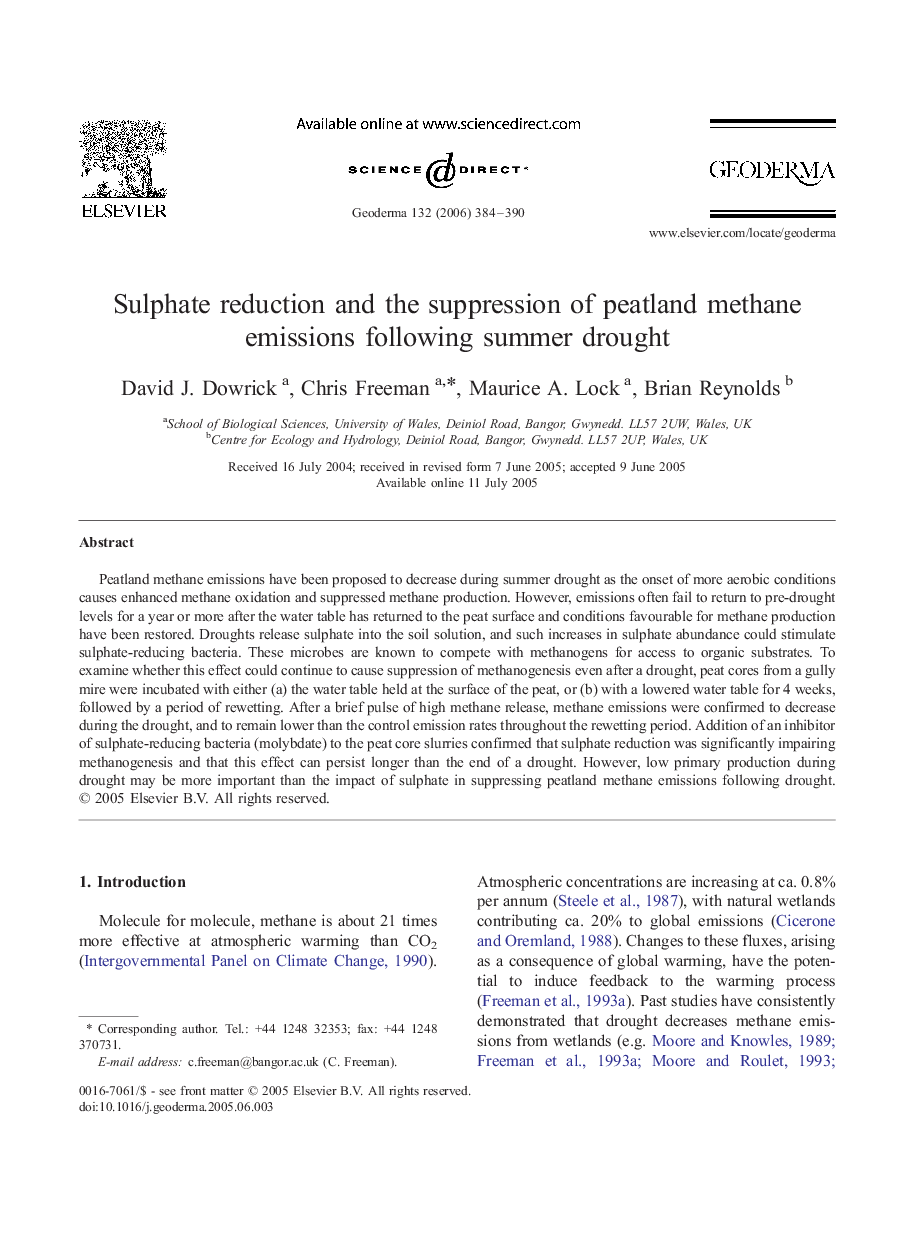| Article ID | Journal | Published Year | Pages | File Type |
|---|---|---|---|---|
| 4575560 | Geoderma | 2006 | 7 Pages |
Peatland methane emissions have been proposed to decrease during summer drought as the onset of more aerobic conditions causes enhanced methane oxidation and suppressed methane production. However, emissions often fail to return to pre-drought levels for a year or more after the water table has returned to the peat surface and conditions favourable for methane production have been restored. Droughts release sulphate into the soil solution, and such increases in sulphate abundance could stimulate sulphate-reducing bacteria. These microbes are known to compete with methanogens for access to organic substrates. To examine whether this effect could continue to cause suppression of methanogenesis even after a drought, peat cores from a gully mire were incubated with either (a) the water table held at the surface of the peat, or (b) with a lowered water table for 4 weeks, followed by a period of rewetting. After a brief pulse of high methane release, methane emissions were confirmed to decrease during the drought, and to remain lower than the control emission rates throughout the rewetting period. Addition of an inhibitor of sulphate-reducing bacteria (molybdate) to the peat core slurries confirmed that sulphate reduction was significantly impairing methanogenesis and that this effect can persist longer than the end of a drought. However, low primary production during drought may be more important than the impact of sulphate in suppressing peatland methane emissions following drought.
